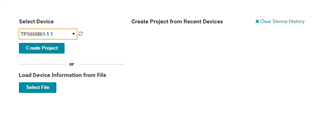Thanks James,
I want use the BOOSTXL-TPS650861 EVM to burn the second OTP in the PMIC in the TPS65086x Evaluation Module.
I will connect all the controls I2C, CTL4 and IRQB to 7V from BOOSTXL-TPS650861 EVM to TPS65086x Evaluation Module.
The motivation is to check my configuration on the TPS65086x Evaluation Module.
Are there any special requirements to do it?
Regards,
Moshe




